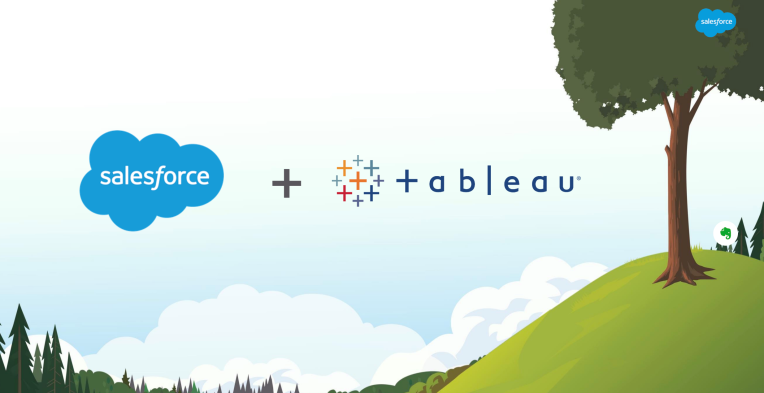Integrating Tableau & Salesforce: Embedding Tableau Into SFDC Objects
In this post, we'll discuss one aspect of Tableau & Salesforce integration: embedding Tableau dashboards into existing Salesforce objects (like account and opportunity pages).

This series of blog posts focuses on our fast & flexible approach to fully integrate Tableau & Salesforce utilizing our Zuar Portal technology.
There are other methods (like using the 2016 Sparkler) but our approach leverages multiple security and SAML models, works with both Tableau Cloud and Tableau Server, easily deploys in Salesforce Classic or Lightning, and can be set up & rolled out in under an hour.
In this post, we'll discuss one aspect of integration: embedding Tableau dashboards into existing Salesforce objects (like account and opportunity pages).
Here's the end goal: A Tableau Dashboard embedded into an account page, filtered to the account, that can be accessed on a mobile device without a VPN.
Creating Reports in Salesforce

Here's how we help customers achieve this result in under an hour:
1) 5 min: Identify the dashboard or group of dashboards in Tableau Server or Tableau Cloud to be embedded:

2) 10 min: Zuar creates a Portal and points it at a customer's Tableau Server or Tableau Cloud site. The Zuar Portal manages authentication, Single Sign-On (SSO) and SAML for the Tableau environment. For Tableau Server users, the Web Application Firewall (WAF) component of the Zuar Portal functions as a proxy, securely exposing Tableau Server to outside users.
3) 20min: In Salesforce, the Salesforce Admin follows our documentation to create a Connected App in Salesforce for the Zuar Portal.

4) 10min: The Salesforce admin creates a Visualforce page that contains four elements in the markup.
- page standardController - in this case, it's the Account
- the canvasApp applicationName - this is whatever you decided to call the Connected App created in step 3. In this case, we've named it "WAF_Tableau"
- sizing the dashboard - we decided to make the maxHeight infinite & the width 100% of the Account page width
- the url of the dashboard, which can be pulled directly from Tableau Server or Tableau Cloud by clicking the "Share" button in their UI


5) 5min: The Salesforce admin drags the Visualforce page into a page layout. The dashboard shows up, filtered to the right data in a completely seamless, secure, mobile-friendly way.
6) 10min: Test. Try accessing the dashboard from multiple accounts, on different devices, with users both inside and outside of the firewall.
At the end of this action-packed, we've gone from a request to "put Tableau into Salesforce" to a fully integrated, fully secure solution ready to roll out to end users.
The next post will discuss how to leverage this integration to tackle the most frequently asked question, "Can I create a Tableau Tab in my Salesforce environment?"
If you would like to try this out in your own Salesforce Sandbox, let us know. We'd be happy to help you get set up with a Zuar Portal trial so that you can see the solution in action with your own data & dashboards.
Take advantage of everything Zuar offers to companies using Tableau!
- Zuar Portal are an easy way to provide branded Tableau dashboards. Monetize your data or provide secure access outside of corporate firewalls.
- Transport, warehouse, transform, model, report & monitor. Zuar Runner gets data flowing from hundreds of potential sources into a single destination for Tableau and has a pre-built Salesforce connector.
- Zuar's team of Tableau-certified consultants can take the headaches out of even the most complex projects.
Related Content




